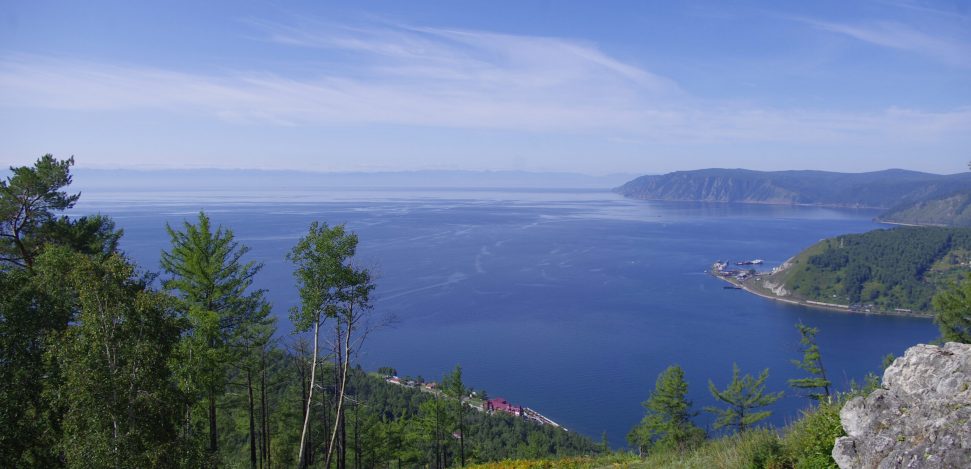Lake Baikal: the deepest and oldest lake in the world

What and where is Baikal? Lake Baikal, designated as an UNESCO World Heritage Site in 1996, is a tectonic lake located in the southern region of Siberia, Russia, between the Irkutsk Oblast in the northwest and Buryatia in the southeast, near the city of Irkutsk. Its name is derived from the Bai-Kul Tartar, “rich lake”. It is also known as the “Blue Eye of Siberia” or “The Pearl of Asia”.
In this post, we will tell you why this lake is so incredible!
Is Baikal the largest lake in the world?
Lake Baikal is the largest freshwater lake in the world if we measure it by volume of water. With around 23.615 km3 lake Baikal contains more water than all of the North American Great Lakes combined.
By surface area, it is only the seventh-largest lake in the world as it has an area of 31 494 km² and is 636 km long and 80 km wide. The biggest lake in the world is the Caspian Sea, followed by Lake Superior, Lake Victoria, Lake Huron, Lake Michigan and Lake Tanganyika. One thing we are sure of: Baikal is surely the largest lake in Russia.
The deepest and oldest lake in the world: Lake Baikal
This lake, located in southeast Siberia, besides having an area of 3,150,000 hectares is also the oldest (25 million years) and deepest freshwater lake in the world (1,700 meters depth).
It is interesting to highlight that it contains about 20% of the world’s unfrozen freshwater.
Lake Baikal animals, plants and climate
Due to its large age and isolation from human influence, the world’s deepest lake also has one of the richest and most unique freshwater fauna on the planet, as it is home to approximately 1,800 animal and plant species. That’s why a lot of people call this lake the “Galapagos of Russia”, not only because it has an impressive array of nearly 4,000 species, but also because 80 percent of those animals are found nowhere else.
But…what is unique about Lake Baikal? Well, the main reason for Lake Baikal’s unique biodiversity is its array of hydrothermal vents. These hydrothermal vents are commonly found in oceans, but Lake Baikal is the only freshwater lake known to have them.
These hydrothermal vents favour the presence of some minerals that make the excellent biodiversity of the lake possible. Lake Baikal is home to approximately 1,700 to 1,800 endemic plant and animal species. Some particular species are the Nerpa Seals- also known as the Baikal seal-, bears, elk, reindeer, lynx, wild boar and the Water Dragon Master.
It is also curious how the water in the oldest lake in the world freezes in bizarre shapes, turning its shores, islands and rocks into a set for a movie in a galaxy far, far away.
Winter and summer tourism al Lake Baikal
If you want to try something different this winter and take a big breath of fresh air, you can visit what is the deepest lake in the world: Lake Baikal, Russia. It will change your perspective of life and give you memories you will never forget.
You can go by your own or also pay for a winter tour and transfer where a local can show you Lake Baikal mysteries and fauna.
For accommodation, you’ll find a lot of options on Olkhon Island. In winter, accommodation is cheap in comparison to summer: in Khuzhir, the main village on the island, a double room or a whole house can be rented for 2,000 to 4,000 rubles ($32-64) a day (including breakfast). From 6,000 rubles ($96), you have some `premium´ options. In most options the price also includes breakfast and other stuff.
Winter is the best time of the year to experience Lake Baikal. We are not sure if you will see a lot of Lake Baikal animals, but you’ll surely see spectacular frozen landscapes of what is the largest lake in the world. Some of them are the ice bubbles under the lake which look amazing and actually represent frozen pockets of methane. Other phenomena you’ll want to see are the ice caves and dazzling ice formations that adorn the red limestone cliffs.
One of the places you have to visit for sure is the Three Brothers Cape, where you can find clusters of arrow-kile icicles hanging. Another place to visit is the Sleeping Lion Rock, which looks like an ice trone.
After all we’ve told you, we are sure you want to discover Lake Baikal fishes and landscapes. All you’ve got to do is purchase your flights and accommodation and wait for one of the best experiences of your life. Are you ready?
Newsletters
Last Minute new From Roll & Feel Sign-up
news









